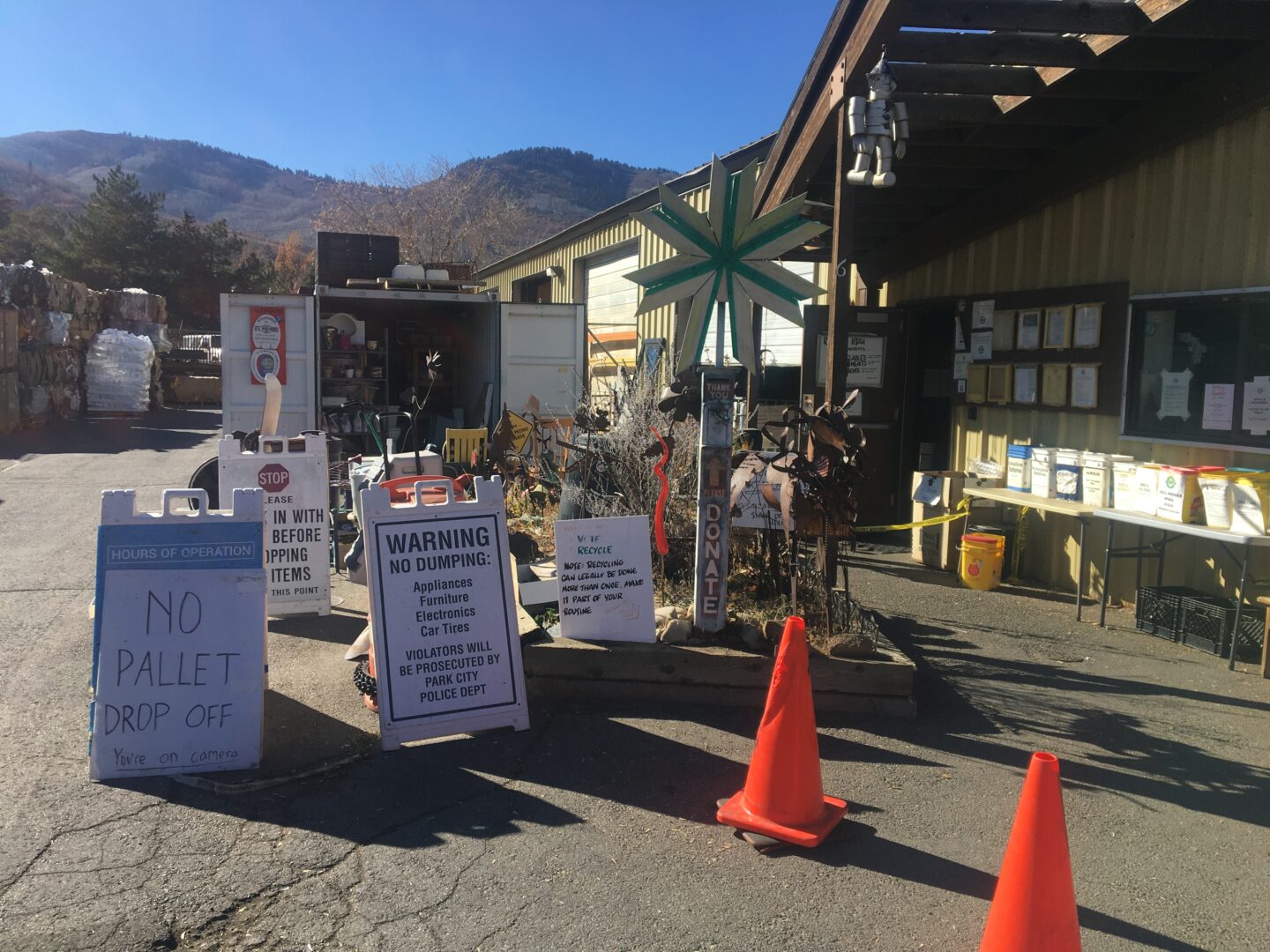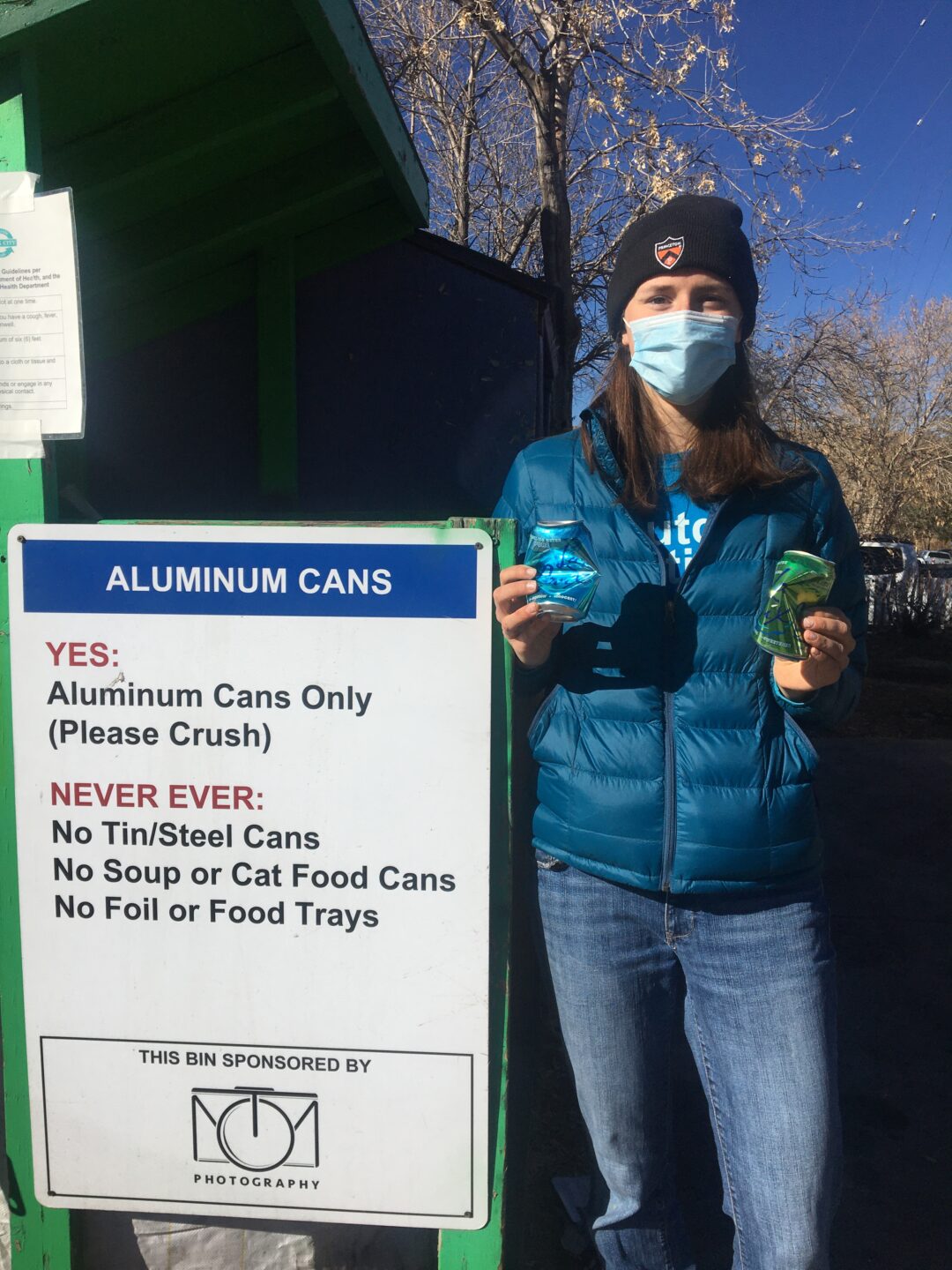Author: Maddy Chong ’23
Recycling is often hailed as “the consumer’s solution to climate change,” and companies tout their sustainability focuses, emphasizing “recyclability” and “going green.” In truth, however, recycling is a deeply flawed system, and we are quickly seeing the consequences of its limitations.
Plastics are particularly difficult to recycle and can cause confusion when we ask ourselves “Which bin does this go in?” One especially confusing aspect is the (in)famous recycling sign. Found on nearly every plastic item, one of the most common sustainability myths is that anything with the recycling sign can be recycled. In this article, we’ll dive into the history of the symbol, what it really means, and why we have to watch out for greenwashing.
The History
In 1970, in response to a design contest for the first Earth Day, college student Gary Anderson designed the Universal Recycling Symbol (URS).
The contest was sponsored by the Container Corporation of America (CCA), a company producing recycled paperboard and interested in raising awareness of environmental issues. Anderson won a scholarship prize for his entry, and he explained that the symbol was inspired by the Mobius Strip, a figure made with a folded strip of paper, creating a single continuous edge. This symbolized the idealistic version of recycling in which items are held infinitely in a circular economy. While the CCA modified the symbol slightly from Anderson’s submission, the design is now widely recognized.
The issue, however, is that in 1988, the US Society of the Plastics Industry developed something called the Resin Identification Code (RIC) system. The purpose of this system was to simplify recycling of plastics for programs across the US by differentiating the different types; each type has to be recycled separately from the others to ensure success. The way they chose to portray this information is by placing a number, 1-7, within a simplified version of the URS, and each number corresponds to a different type of plastic.
Immediately, we see a problem emerging; a system used to identify plastics (which aren’t all recyclable) uses a sign that signifies that something is recyclable.
Meanwhile different variants of the symbol were also developed, with some indicating that something is recyclable, others that the item is made of recycled materials, and still others emerging.
The invention of the RIC system, combined with the development of different variations of the symbol, has today created a complex, confusing knowledge system. What started off as a seemingly simple idea has now been co-opted and actually makes recycling more difficult for American consumers.
So why is this a problem?
The biggest problem is contamination. This occurs when recycling is done incorrectly and can arise from trying to recycle things that are dirty, made from an non recyclable material, or otherwise not sorting things correctly. Contamination is a huge problem in the recycling industry, and it is time consuming and inefficient to sort contaminated bins, so they are often just sent to the landfill as trash.
In addition, even when done correctly, plastic is always downcycled. What this means is that it loses value every time that it is recycled. So, after only 1 or 2 goes, even the most recyclable plastics have to be turned into a final, nonrecyclable product. Thus, the need for virgin plastic isn’t stopped by recycling and is slowed at best.
There is also very little demand for post-consumer materials. Transporting and recycling materials (even when they are not contaminated) is inefficient and costly, so it is often cheaper to just use virgin materials. This is why many types of plastic (think 3-7) are rarely accepted – there is just no monetary incentive to do so. This problem is further emphasized by the fact that the US can no longer ignore our problem and sell waste to other countries.
On an individual level, recycling is also difficult. Companies have caught on that more and more people are looking for sustainable options. However, instead of opting for sustainable practices, many have just turned to greenwashing. This is the concept of using symbols like the color green, plants, or the words “environmentally friendly” on marketing. Now, to determine if something is actually sustainable, consumers have to research and invest time into their purchasing choices. Not everyone is willing to do this, and corporations get away with branding their products as something they aren’t.
Recycling standards also change by location and time, so people must stay up to date and informed to recycle properly. Changes often aren’t communicated broadly or clearly, and this leads to further contamination in our recycling streams.
So what now?
The state of affairs seems gloomy, certainly. But, recycling isn’t a completely moot point. By improving the system we currently have while also developing and working towards something better, we can collectively work towards brighter futures.
The first step is moving away from plastics in general. Decreasing our use will not only reduce how much is sent to be recycled (and later landfilled), but also lower demand. Plastic is made from oil, after all, so it is in our favor to produce as little as possible. Finding alternatives is a big part of this.
On a personal level, find reusable versions of the most common single-use items. Things like utensils, dishware, and cups are some of the most common products made from plastic (and usually aren’t recyclable due to food contamination). On a larger scale, encourage research into alternatives and support legislation that focuses on plastics/recycling to help shift our society away from our plastic reliance.
Once we’ve started to eliminate unnecessary use, paying attention to what we do have to use can help reduce contamination. This requires learning about whether products are actually recyclable and/or sustainable and not falling prey to companies looking to make money. One resource that makes this especially easy as a Princeton student is the Recycling App. Supported by the Office of Sustainability, students can look up most items to determine if and where they can dispose of specific items. Many cities have similar guidelines online, available to residents looking to be informed about the practices in their hometowns.
As consumers, we have a responsibility to learn about what happens to the products we use and to play an active role in improving the system we live in.


